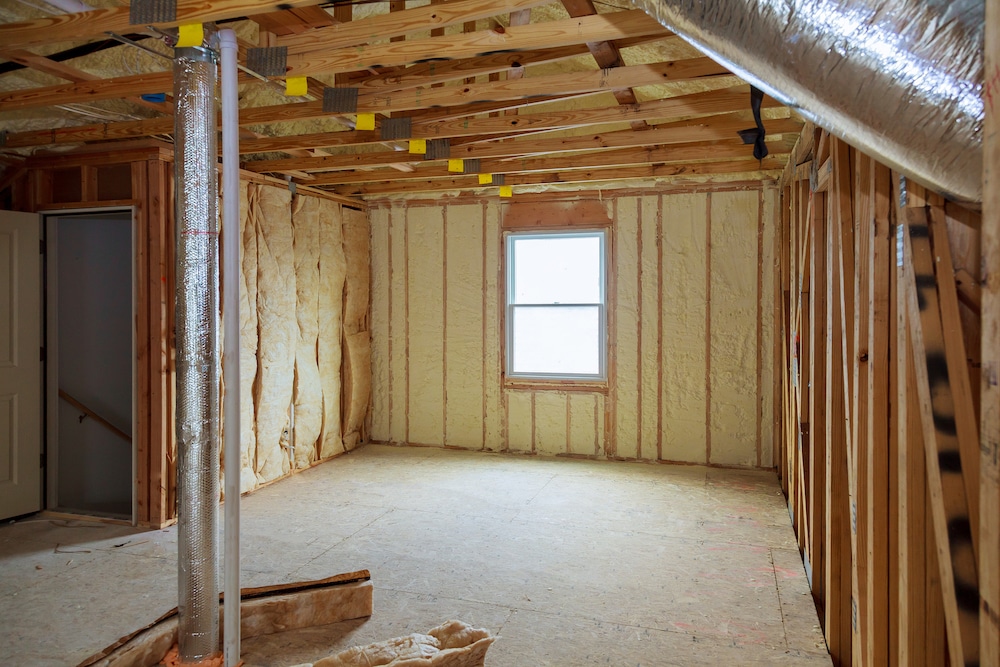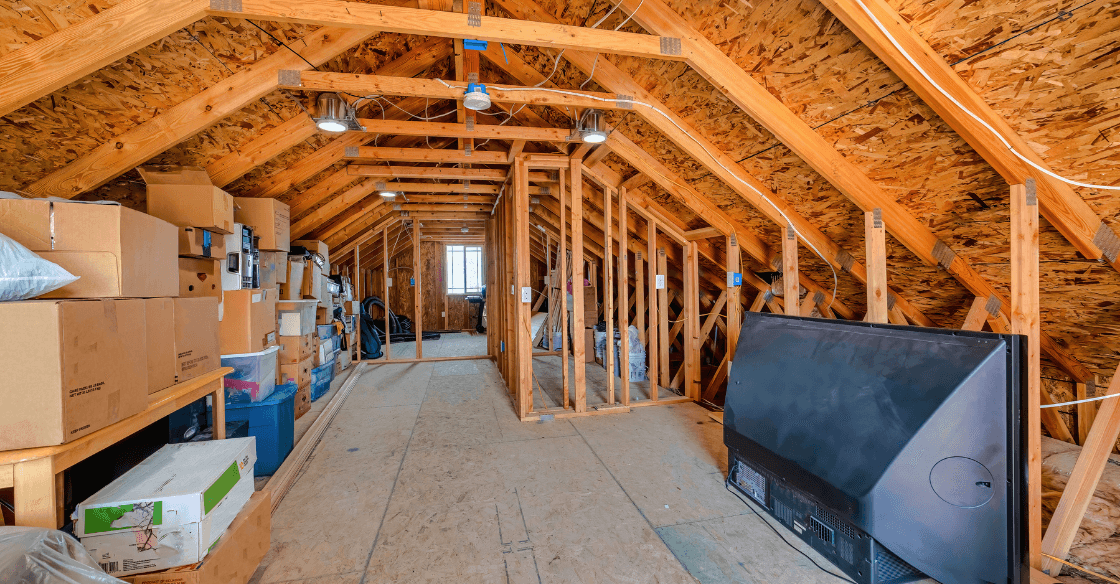You might not think about your attic until it’s time to put up the holiday decorations, but attics are an important part of your home. Unlike other rooms, you’re not up in your attic every day, so it can be hard to see issues—leaks from the weather and discoloration. A deeper attic inspection can reveal even more hidden problems, but what do attic inspectors look for, and what happens during an inspection?
What Is an Attic Inspection?
An attic inspection occurs semi-annually or every few months to look underneath your home’s roofing. An inspector will scope out signs of a pest infestation, nests, leaks, and other common problems. Your inspector will provide a list of issues that can no longer go unfixed.
The Need for an Attic Inspection
While inspecting your attic yourself can be helpful if you’re looking for major, obvious damage, a professional inspector knows how to inspect hard-to-reach and hidden areas to list even minor damage in your attic. We recommend an inspection every six months at the beginning of spring and then after fall.
An inspection should take one to two hours, depending on the damage or problems found. Most homeowners will only contact an inspector after they notice damage or a leak, but preventative inspections prevent these issues from happening in the first place. If you’re planning to sell your home, an inspection is a must to show potential buyers that there are no structural issues.
Attic Inspection Checklist
Whether you conduct inspections yourself or through an expert, an attic inspection checklist helps you track what to focus on for a future inspection.
Ventilation
The condition of your roof will determine your attic’s ventilation. Proper roof ventilation shuttles air underneath the roof’s sheathing and exits correctly. If there is poor ventilation, excessive hot air becomes stuck inside the attic during the hotter months, so a roof and attic inspection together can help you see what roof repairs or upgrades you need to improve your home’s energy efficiency.
During winter, ice or freezing water can cause damage or leaks. A ventilation inspection will also reveal damage to the shingles, rotting, molding, and incorrect temperature.
Insulation
Cheap, low-quality insulation can negatively impact your home’s energy efficiency. A professional attic insulation inspection will determine improper insulation. A major sign of a poor insulation job is moisture. A “mold in attic” home inspection will identify if poor ventilation is causing humidity or mold growth.
Leaks
If your roof is leaking, the first place the water will go is into your attic. A wet attic will lead to more problems and can be more severe during winter. An inspector will search for rotting materials, growing mold, and damaged roofing and let you know what repairs you need right away to prevent the damage from spreading.
Pests
An attic inspection for rodents checks the common signs of their presence. Inspectors will look for droppings, damage from gnaw marks or an unusual odor. Cold, dark areas are a haven for all pests, and attics are bound to attract them.
If you have concerns about pests, it’s best to schedule an attic inspection for animals, then call exterminators immediately.
Exhaust Ducts and Vent Stacks
Not all exhaust ducts and vent stacks operate the same, and an attic duct inspection can reveal other problems around the house. If you’ve chosen to do a sealing duct job for your DIY project, you may find leakage, dust blockages, and uneven cooling and heating distribution.
A vent stack is a pipe that travels through the attic and then sticks out of the roof to vent hot air. These pipes can clog with dirt, leaves, or debris, and your attic inspection will show if you need to unclog or repair your vent stacks.

Advantages of Attic Inspections
The main advantage of an attic inspection is that it makes you aware of the potential damage that will cost you in the long run. A professional inspector will answer any questions you may have as well.
Other benefits of attic inspections include:
- Prevent fungus and the spread of mold growth
- Prepare the space for converting into a living space
- Maintain an energy-efficient home
- Check home ventilation
- Set up a house on the market so that it is safe for buyers
- Receive a full report on home inspection findings
With professional attic experts, you get peace of mind knowing your attic is dry, secure, and safe from damage and pests.
Frequently Asked Questions (FAQs) – Attic Inspection
How often should you check the attic?
You should check your attic every three months. Before entering:
- Wear protective gear and light the area.
- Check the general area for leaks, damage, or signs of pests.
- Examine your insulation for bald patches or damp spots
Schedule professional attic inspections at least once a year. An attic inspection costs between $100 to $600, depending on the size of the attic.
How can I make my attic safer?
To make your attic safer, you can:
- Make sure the stairs are secure.
- Lay down boards or flooring.
- Be careful when walking around through it when it is dark.
Clean space and proper insulation and venting are the safest for your home. If you want the safest, most usable attic, it’s best to finish it. An unfinished attic is hazardous and often unorganized, leading to accidents.
What is the main purpose of attic inspection?
The main goal of attic inspection is to ensure the structural integrity of your home and identify structural or temperature issues. Inspections allow you to keep your home up to date. If you have questions about a fluctuating energy bill or the history of your home, an attic inspection is your go-to.
Conclusion
For homeowners looking for “attic inspection near me” or wondering who to call for attic inspections, look no further than Attic Projects. Our attic inspection services are reliable, and we are here to assist you with many attic cleaning services. Call us today to receive a free consultation and estimate today.




